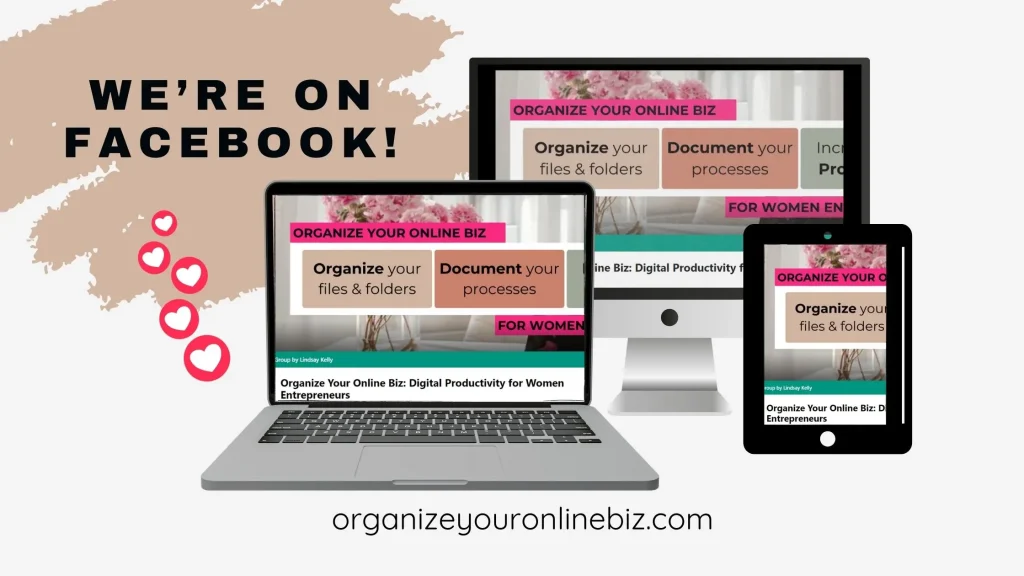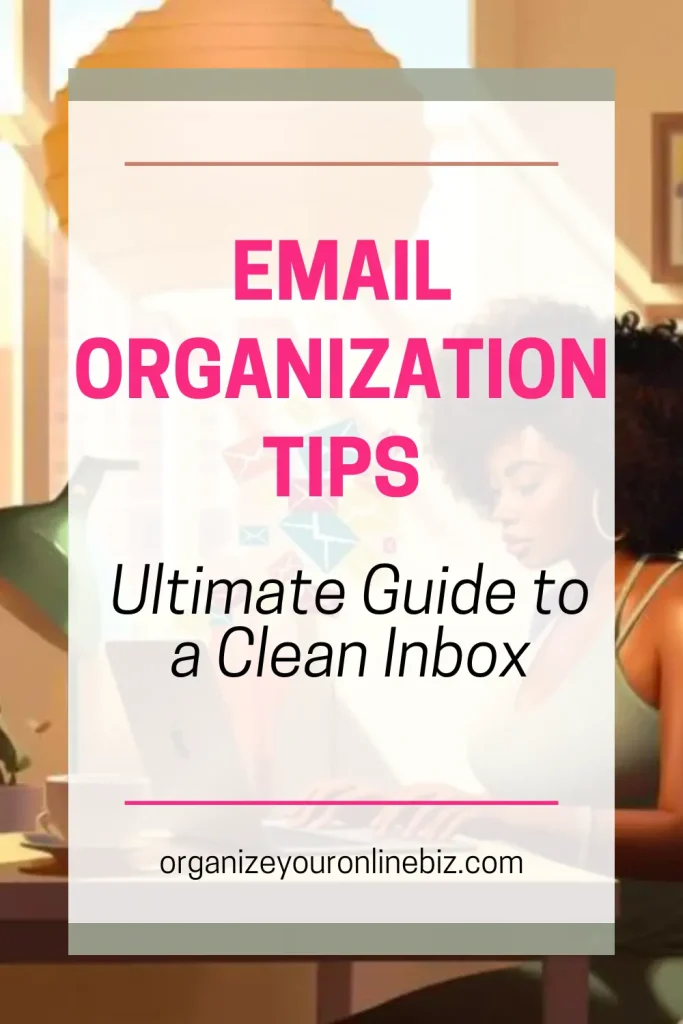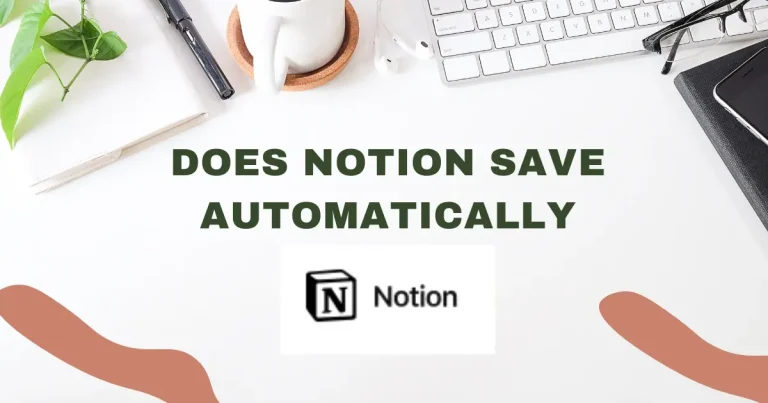Email Organization: The Ultimate Guide to Streamlining Your Inbox
Have you ever felt overwhelmed by a cluttered inbox that just keeps growing? You're not alone. Most business owners that I have talked to feel that their email organization is out of control and they don't know where to start to fix it. And unfortunately, emails are a necessary part of business life so leaving it will only make things worse!
Whether you're drowning in newsletters, deal alerts, or just everyday communications, taking control of your inbox can help make email management less painful and increase your productivity!
Table of Contents
What is Email Organization?
Email organization refers to the process of managing, sorting, and prioritizing emails in an inbox to improve efficiency and reduce clutter. This practice is essential for maintaining productivity, especially for those who receive a large volume of emails daily. Effective email organization involves several key strategies:
Understand Your Email Habits
Understanding your email habits is the first step toward effective email organization. By assessing your current email management approach and identifying areas for improvement, you can streamline your communication process and boost productivity.
Procrastination and overwhelm are the two most common responses when I asked business owners about why their current email system is the way it is. And that's ok. No shame, we have all been there!
My friend, Lynsey from Quietly Conquer has some great tips on managing procrastination to help you be more productive!
Ok, back to fully understanding your current email system.

Assess your current email management approach
Do you leave emails in your inbox indefinitely? Are you guilty of letting emails pile up in your inbox, creating a chaotic digital space? This common habit can lead to missed opportunities and important messages getting buried. Consider the impact of this clutter on your efficiency.
Do you struggle to find important messages when needed? If you often find yourself searching frantically for specific emails amidst the clutter, it may be time to rethink your email organization strategy or implement one if you don't have a system in place. Efficient email management ensures quick access to critical information.
Do you spend too much time sorting through clutter? Spending excessive time sorting through a disorganized inbox can eat into your valuable work hours. Recognize the need for a structured approach to managing your emails for increased productivity.
Identify areas for improvement
Recognize the consequences of poor email organization Poor email management can result in missed deadlines, miscommunication, and decreased productivity. Take note of how disorganized emails impact your daily workflow to motivate change.
Determine your goals for a more efficient system Setting clear goals for improving your email management system is crucial. Whether it's responding promptly, categorizing emails effectively, or decluttering your inbox regularly, defining your objectives will guide your email organization efforts.
Understanding your current email habits and recognizing areas for enhancement are essential steps in optimizing your email management practices for increased efficiency and productivity. This allows you to determine how you're going to move forward to

Declutter and Prioritize
In today's fast-paced digital world, managing an overflowing inbox can seem overwhelming. Embracing the “Zero Inbox” mindset can help you declutter and prioritize your emails effectively.
Embrace the “Zero Inbox” mindset
Clear out your inbox regularly
To maintain a clutter-free inbox, make it a habit to clear out unnecessary emails regularly. Delete irrelevant messages and archive those you may need for reference later. Keeping a clean inbox can reduce digital clutter and help you focus on important tasks.
Schedule a time to handle incoming emails
Decide when you're going to deal with emails. It could be the first thing you do in your day or the last. I prefer to do them first thing in case there is a time-sensitive email that requires my immediate attention. I schedule between 15 – 30 minutes to do with emails and then move on to the rest of my day.
I like to use Sunsama to schedule my daily emails. I wrote a full Sunsama review if you want to see why it's my favourite time management tool.

Some people like to leave their emails open and deal with new emails as they come in. I caution you when using this approach as constantly popping into your email breaks your focus from your current task at hand and reduces productivity.
On average it takes 23 minutes to refocus after being distracted. So if you have even 3 emails that pop up in a day that you instantly divert your attention to, you're spending over an hour trying to refocus on the task you were working on. Imagine what you could have accomplished in that hour.
Times that by 5 working days a week – what could you have accomplished with those 5 hours? A month? You get my point.
Prioritize and categorize emails
Develop a system for labelling and colour-coding
Organize your inbox by creating labels and colour-coding emails based on their priority or category. This visual organization makes it easier to identify important messages at a glance and helps you locate specific emails quickly.

Use flags, stars, or other markers to highlight important messages
Utilize flags, stars, or other markers within your email client to highlight emails that require attention, but that you're not dealing with at that moment. By marking important messages, you ensure they stand out in your inbox and prevent them from getting lost in the sea of emails.
Unsubscribe from unnecessary emails
Evaluate your subscriptions and streamline them to include only essential sources of information. By reducing the number of incoming emails, you can focus on relevant content and prevent your inbox from becoming overcrowded with unimportant messages.
Establish a Folder Structure
Creating a well-organized folder structure is a great way to effective email management. By establishing a clear hierarchy of folders, you can streamline your inbox and find emails more efficiently.

Create a Logical Hierarchy of Folders
When setting up your email folders, begin by separating your personal and business emails. This division ensures that you can focus on the relevant emails based on your current schedule, leading to better organization and less clutter in your inbox.
Additionally, organizing business emails by project, client, or topic can further enhance efficiency. This method allows you to categorize emails based on their context, making retrieval simpler and faster.
Utilize Subfolders
Consider the use of subfolders (some also call these nested folders) within your main categories. This is where you have folders within folders.
Breaking down larger categories into subcategories using subfolders helps prevent overcrowding in any given folder. By maintaining a clear and intuitive structure, you can easily navigate through your folders and locate specific emails without difficulty.

For example. If you have clients you could have a main folder called “Clients” and then each client as a subfolder.
Implement a Consistent Naming Convention
Consistency in naming conventions is crucial for easy email management. Just like when it comes to naming files, you want to use descriptive and concise folder names that accurately represent the contents within.
Additionally, consider incorporating prefixes or codes to aid in sorting and categorization. These labelling techniques can significantly improve the visibility and accessibility of your emails, leading to a more efficient workflow.
Leverage Email Filters and Rules
One great thing about emails is that you can set up rules to categorize them based on specific criteria. These criteria could be the sender, keywords, specific topic, etc.
This can help streamline your email management. By creating filters that automatically prioritize or move emails to designated folders, you can save time and focus on essential messages.
Develop a Routine for Email Management
Creating a routine for managing your emails can significantly improve your productivity and efficiency. By establishing consistent habits, you can stay organized and ensure that important emails are addressed promptly.
Set Specific Times for Checking Emails
Establish designated times during your day to check and respond to emails. Avoid the temptation to constantly monitor your inbox, as this can be distracting and disrupt your workflow. Setting specific intervals for email communication allows you to focus on other tasks without interruptions.

Prioritize Your Email Tasks
When going through your inbox, prioritize emails based on their urgency and importance. Use categories or labels to sort emails for quick identification of action items. Address time-sensitive messages first and then move on to less critical ones.
Document your Process in an SOP
Once you've determined how you deal with emails, the easiest way to ensure this is done consistently is to document your processes in a standard operating procedure SOP.
This isn't the same as an Email Marketing Strategy SOP which would cover the business content that you're sending out in your regular newsletter, for example. This Email Management SOP is about dealing with incoming email – whether they're business or personal. This is going to lay out when you're checking emails, responding to emails, the email folder structure, what prompts you to unsubscribe, etc.
Documenting your incoming email processes is going to ensure consistency and efficiency. It's one more step in keeping your online business organized.
Implement the “4D” Approach
When it comes to organizing your email efficiently, one effective method is to implement the “4D” approach. This approach involves four key actions to help you streamline your inbox and boost your productivity.
Delete Unnecessary Emails
Start by decluttering your inbox. Delete emails that are no longer relevant, spam, or promotional messages that you have already read. By removing unnecessary clutter, you can focus on the emails that truly matter and avoid distractions.
Do Tasks That Can Be Completed Quickly
Next, address emails with tasks that can be completed swiftly. If an email requires a simple response or action that will take just a few minutes, tackle it right away. This proactive approach helps you stay on top of your to-do list and prevents tasks from piling up.
Delegate Tasks to Others When Appropriate
For emails that involve tasks better suited for someone else in your team or network, consider delegating. Delegating tasks can help distribute work efficiently, capitalize on each team member's strengths, and ensure timely completion of tasks that require specialized skills.
Defer Tasks That Require More Time for Later
Lastly, for emails that involve complex tasks or require more time and attention, defer them for later. Create a system to prioritize these tasks based on urgency and importance. Schedule dedicated time slots to focus on these emails when you can give them the necessary attention without rushing.
By following the “4D” approach – Delete, Do, Delegate, Defer – you can effectively manage your email workload, increase your efficiency, and maintain a well-organized inbox. Remember, a clutter-free inbox leads to a clearer mind and enhanced productivity.
This form of deciding is also referred to as the Eisenhower Decision Matrix

Wrapping It Up
Organizing your email effectively is an important step to boosting your productivity and staying on top of your tasks. By implementing a system that works for you, whether it's creating folders and subfolders or setting up filters, you can streamline your inbox and save valuable time each day.
Remember, the goal of email organization is not just to have a clean inbox, but to make your workflow smoother and more efficient. Take the time to declutter regularly, unsubscribe from unnecessary newsletters, and prioritize emails based on urgency and importance.

Next steps? Set up your new Email Management system (including SOP)! Head over to the Facebook Group to get more business organizing and productivity tips! See you there!
If This Post Helped You In Any Way, Please Pin One Of These Images Below!
It helps my blog enormously. Thank you!




Hi, I'm Lindsay!
A blogger dedicated to empowering women entrepreneurs in the online business world. With over 15 years of experience in process documentation and SOP creation, I specialize in streamlining workflows, organizing workspaces, and optimizing digital tools for maximum efficiency. Join me as we transform your business operations with practical insights and budget-friendly solutions.







